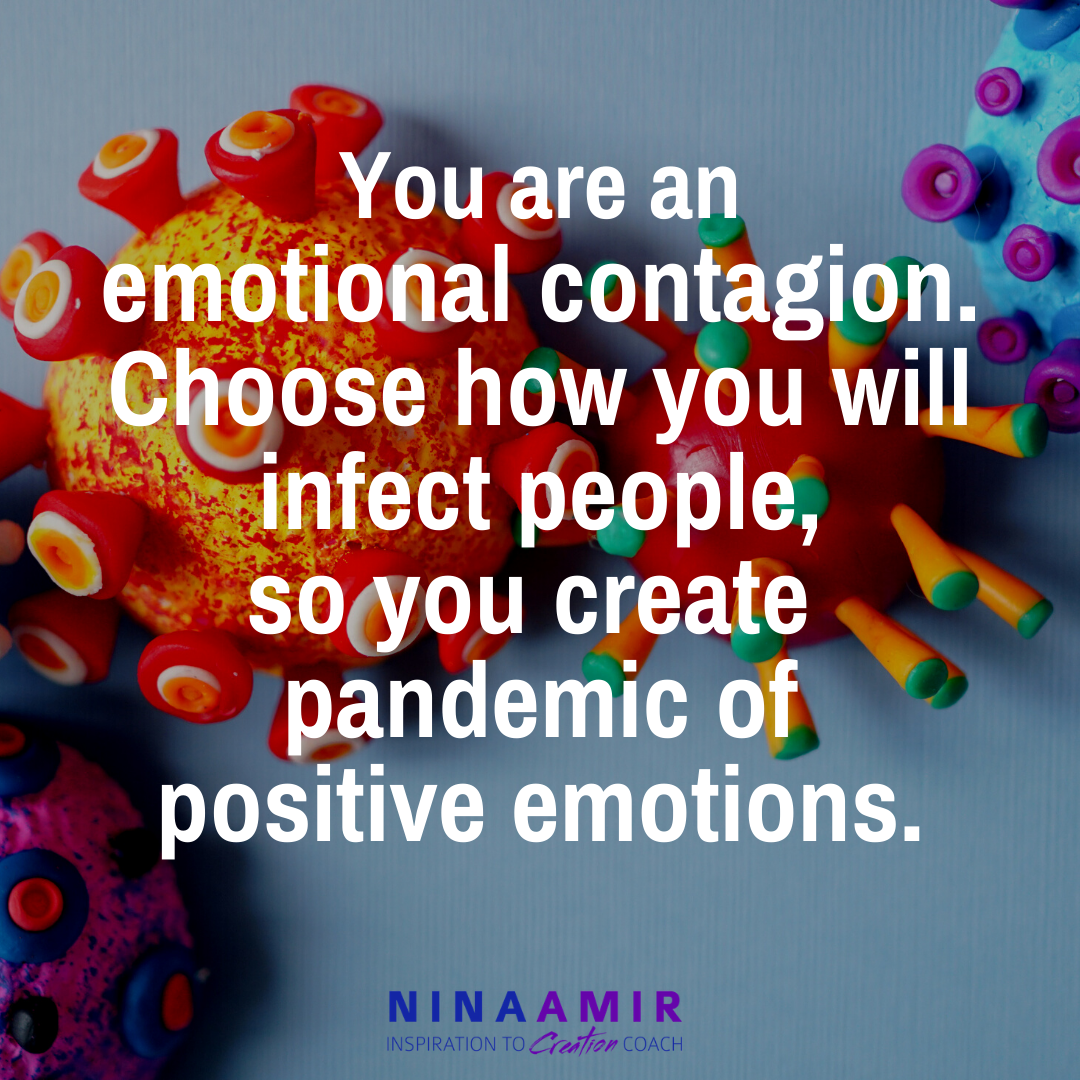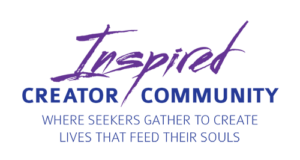Monday, July 20, 2020

I have a friend who introduced me to the concept of being an emotional contagion. I had never heard the term but considered it a powerful idea, so I did a little research. As a result, I became interested in how one intentionally becomes an emotional contagion of the positive type.
As I am writing this blog post, the world is still struggling to eradicate the COVID-19 virus—especially here in the United States. Thus, the word “contagion” brings up thoughts of pandemics and contagious people who, as a result, spread the virus to others.
An emotional contagion is also a virus carrier, but the virus has an emotional nature. Emotional contagions spread joy, anger, passion, anger, or any other positive or negative emotion.
Maybe you’ve been around someone whose joy was contagious. Perhaps, you’ve spent time with someone whose unhappiness infected you. Possibly you went to a rally, concert, or event where the emotions expressed by the person on stage rippled over the entire audience.
If so, you know what it means to be an emotional contagion.
You are an Emotional Contagion
Each of us operates as an emotional contagion, whether we know it or not. We spread emotion to others consciously and unconsciously.
Whether or not you get infected by someone else’s emotions is up to you, though. You can allow yourself to contract someone else’s emotion, or you can consciously choose, carry, and spread emotions of your own choosing.
A Two-Step Emotional Contagion Process
In 1993, psychologists Elaine Hatfield, John Cacioppo, and Richard Rapson wrote a paper on emotional contagion. They defined the term as: “the tendency to automatically mimic and synchronize expressions, vocalizations, postures, and movements with those of another person’s and, consequently, to converge emotionally.”
These psychologists also described emotional contagion as a two-step process:
1. We imitate people. That means that, if someone smiles at you, you smile back. 2. Your emotional experiences change based on non-verbal emotional signals. For instance, smiling makes you feel happier and frowning, making you feel unhappy. This is true if someone near you smiles or frowns, too.
 Monkey See, Monkey Do and Feel
Monkey See, Monkey Do and Feel
Mimicry seems to be a foundational element of emotional movement between people. It’s a bit like monkey see, monkey do but with monkey feel added to the equation.
Think about it…
When you are with someone sad, how do you feel? I feel sad. I mimic their emotional state.
How about when you are around someone angry? If my husband gets angry, I immediately respond with anger. I mimic his emotional state—even though I don’t like being around angry people. Seen through the lens of emotional contagion, my husband’s anger infects me—just like a virus.
Chalk It Up to Empathy
You could chalk this mimicry up to empathy, which is the ability to understand and share others’ feelings. If you are an empathetic person, you feel what others feel. However, emotional contagion is actually a tendency to “catch” others’ emotions, which is different than empathy.
In an article in The Corsini Encyclopedia of Psychology and Behavioral Science, Hatfield and Rapson labeled emotional contagion as “primitive empathy.” They explained that neither mimicry nor emotional contagion provides a full experience of empathy because empathy depends upon self-awareness and self-other distinction. The latter gives you the ability to understand and share the feelings of another, not just “catch” or be “infected” with someone else’s emotions.
When you listen to your best friend tell you about her struggle as a stepparent, and you, too, have had this experience, you empathize with her. When you are around someone super happy and find yourself feeling happy, that’s emotional contagion at work.
Choose an Emotional Infection
When you understand the phenomenon of emotional contagion, you can choose how to feel and what emotion you’d like to “give” to others. What type of contagion would you like to be? You can choose to be a negative contagion or a positive one.
Consider how your choice affects you. How will it make you feel? Then consider others with whom you come into contact. How will it make them feel?
Smiling automatically makes you feel better. (Try it…) But when you smile at someone else, they feel better, too. Frown, and you will feel worse—and so will those who see you frown.
If you want to feel happy, hopeful, peaceful, and loving, and to invite other people to feel that way, too, choose to express those emotions—with your facial expressions, voice, body language, and energy. In this way, you will infect other people with the same positive emotions.
Your Responsibility
I recall Oprah Winfrey mentioning a sign she has in her makeup room. It says, “Please take responsibility for the energy you bring into this space.” I liken emotional contagion to the energy you bring to any situation or relationship. After all, emotions have an energy.
It’s your responsibility, therefore, to choose the emotion you bring to a room.
I challenge you, however, to be a positive emotional contagion. Bring high, positive energy to the rooms you enter. In fact, be a positive emotional contagion no matter what you do or with whom you spend time.
Infect the World with Positivity
Pay attention to how you infect other people with your emotions. Notice the emotional effect you have on others.
The world would be a better place if we all chose to be positive emotional contagions. Each of us would spread a positivity virus to all of humanity.
Don’t add to the world’s discord by being the kind of virus that wreaks havoc and takes lives. Instead, be one that spreads good feelings and enhances lives. Create a positive emotional pandemic.
Do you feel the desire for more? Or have you filled the emptiness in some way? Tell me in a comment below. And if you know someone who would benefit from reading this post, please share it!
Never miss one of my videos! Click here to subscribe to my YouTube channel.
Do you want better control of your emotions and how you react to the emotions of others? Do you long for real transformation? Give me 90 minutes of your time, and I’ll help you discover the inspired next steps that will help you achieve the personal and spiritual growth you desire. In the process, you’ll take huge strides toward fulfilling your potential and purpose and realizing your dreams. Apply for a FREE Certified High Performance Coaching strategy session. Fill out this application.
Or register for my Certified High Performance Group Coaching program here. It’s a great option if you don’t feel ready for one-on-one coaching and want to enjoy the power of group learning.
Or…if you are interested in both personal and spiritual growth, join the Inspired Creator Community. Find out more and join by clicking here. Become a Founding Member!
Photo courtesy of Bobby Donald on Unsplash
Nina Amir is known as the Inspiration to Creation Coach. As one of 800 elite Certified High Performance Coaches working around the world, she helps her clients Achieve More Inspired Results. She works with people who want to realize their dreams, achieve their potential, fulfill their purpose, and live full lives that feed their souls. Nina is also a bestselling author, certified Law of Attraction Coach, certified rebirther, and ordained minister.